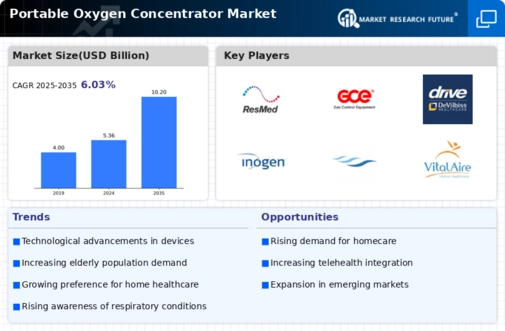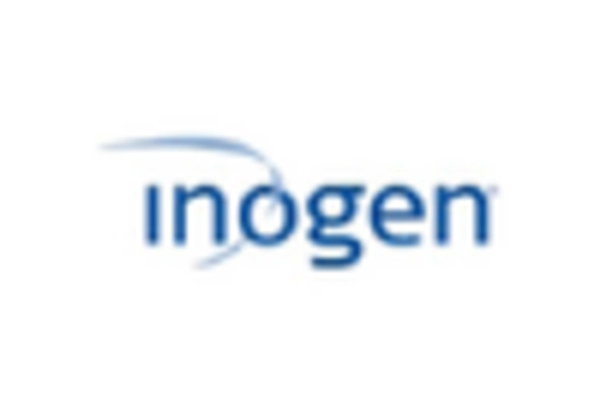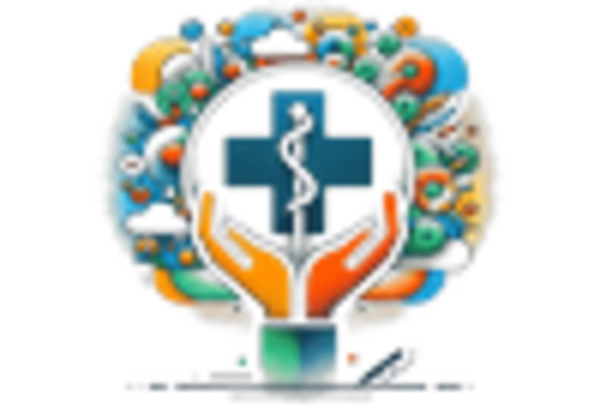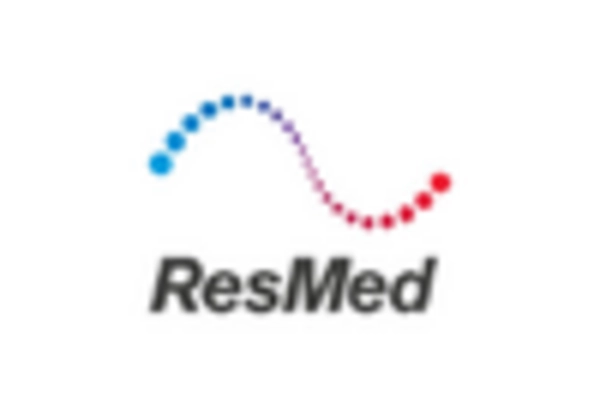Rising Prevalence of Respiratory Disorders
The increasing incidence of respiratory disorders, such as chronic obstructive pulmonary disease (COPD) and asthma, is a primary driver for the Portable Oxygen Concentrator Market. According to health statistics, respiratory diseases affect millions of individuals, leading to a heightened demand for supplemental oxygen solutions. This trend is particularly evident in aging populations, where the prevalence of such conditions is notably higher. As a result, healthcare providers are increasingly recommending portable oxygen concentrators to enhance patients' quality of life. The market is projected to witness substantial growth, with estimates suggesting a compound annual growth rate (CAGR) of over 10% in the coming years. This growth is indicative of the urgent need for effective respiratory support, thereby propelling the Portable Oxygen Concentrator Market forward.
Increased Focus on Patient-Centric Solutions
The growing emphasis on patient-centric solutions is a significant driver for the Portable Oxygen Concentrator Market. Healthcare providers are increasingly prioritizing the needs and preferences of patients, leading to a demand for more personalized and convenient oxygen therapy options. This shift is reflected in the design and functionality of portable oxygen concentrators, which are being developed to enhance user experience. Features such as adjustable flow settings, ergonomic designs, and ease of use are becoming standard in new models. Additionally, the focus on patient education and support is fostering a more informed consumer base, which is likely to drive sales. As healthcare systems continue to evolve towards patient-centered care, the Portable Oxygen Concentrator Market is expected to thrive, with innovations tailored to meet the specific needs of users.
Aging Population and Increased Life Expectancy
The aging population and increased life expectancy are pivotal factors influencing the Portable Oxygen Concentrator Market. As individuals age, the likelihood of developing chronic respiratory conditions rises, necessitating the use of supplemental oxygen. Demographic data suggests that the proportion of elderly individuals is steadily increasing, leading to a corresponding rise in the demand for portable oxygen solutions. This demographic shift is particularly pronounced in developed regions, where healthcare systems are adapting to cater to the needs of older adults. The market is expected to benefit from this trend, with projections indicating a substantial increase in the adoption of portable oxygen concentrators among seniors. This demographic factor is likely to play a crucial role in shaping the future landscape of the Portable Oxygen Concentrator Market.
Growing Awareness and Acceptance of Home Healthcare
The rising awareness and acceptance of home healthcare solutions are driving the Portable Oxygen Concentrator Market. As patients and caregivers become more informed about the benefits of home-based oxygen therapy, the demand for portable oxygen concentrators is likely to increase. This shift towards home healthcare is supported by various healthcare policies that promote patient-centered care and reduce hospital readmissions. Market data indicates that the home healthcare segment is experiencing rapid growth, with a significant portion of oxygen therapy being administered outside traditional clinical settings. This trend not only enhances patient comfort but also reduces healthcare costs, making portable oxygen concentrators an attractive option for many. Consequently, the Portable Oxygen Concentrator Market is poised for growth as more individuals opt for home-based treatment solutions.
Technological Innovations in Oxygen Delivery Systems
Technological advancements in oxygen delivery systems are significantly influencing the Portable Oxygen Concentrator Market. Innovations such as miniaturization, improved battery life, and enhanced user interfaces are making these devices more accessible and user-friendly. For instance, recent developments have led to the creation of lightweight models that can be easily transported, catering to the needs of active users. Furthermore, the integration of smart technology, including mobile applications for monitoring oxygen levels, is becoming increasingly prevalent. These advancements not only improve the functionality of portable oxygen concentrators but also expand their appeal to a broader demographic. As a result, the market is expected to expand, with a projected increase in unit sales, reflecting the growing consumer preference for technologically advanced solutions.


















Leave a Comment